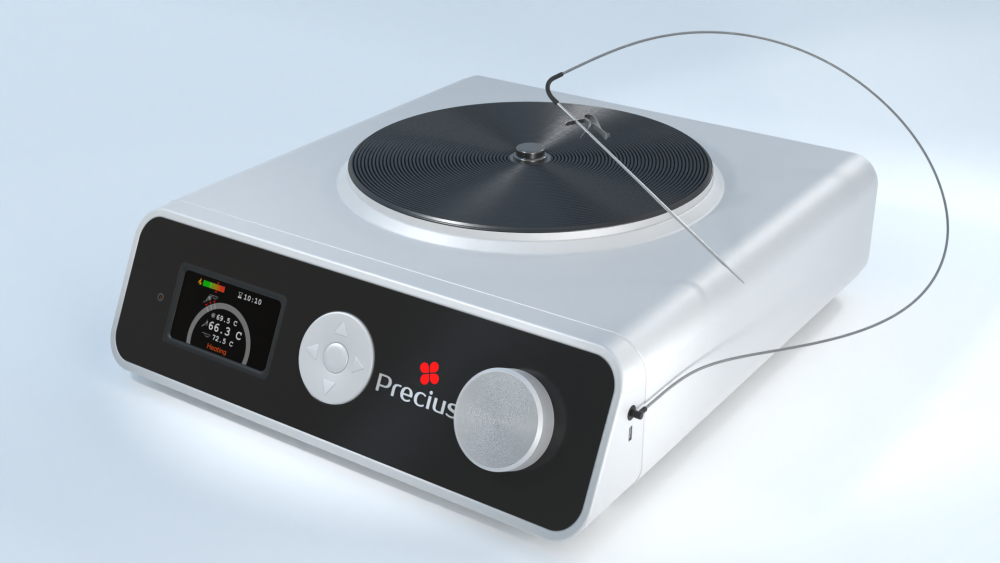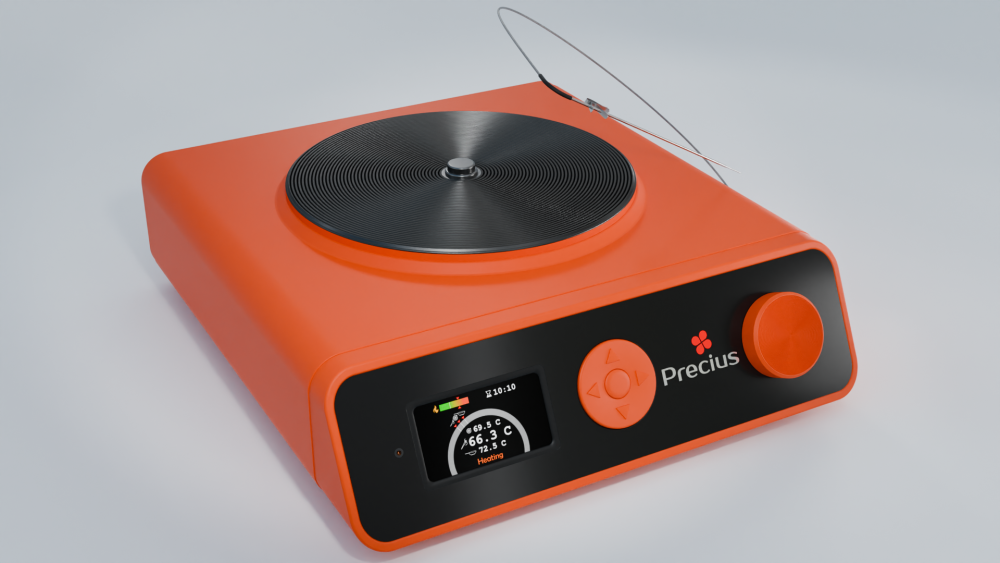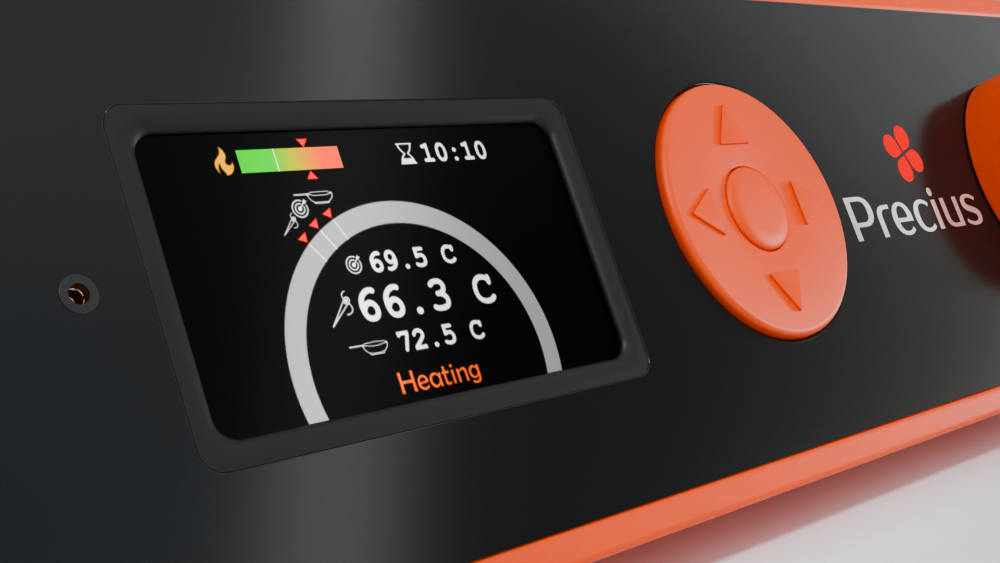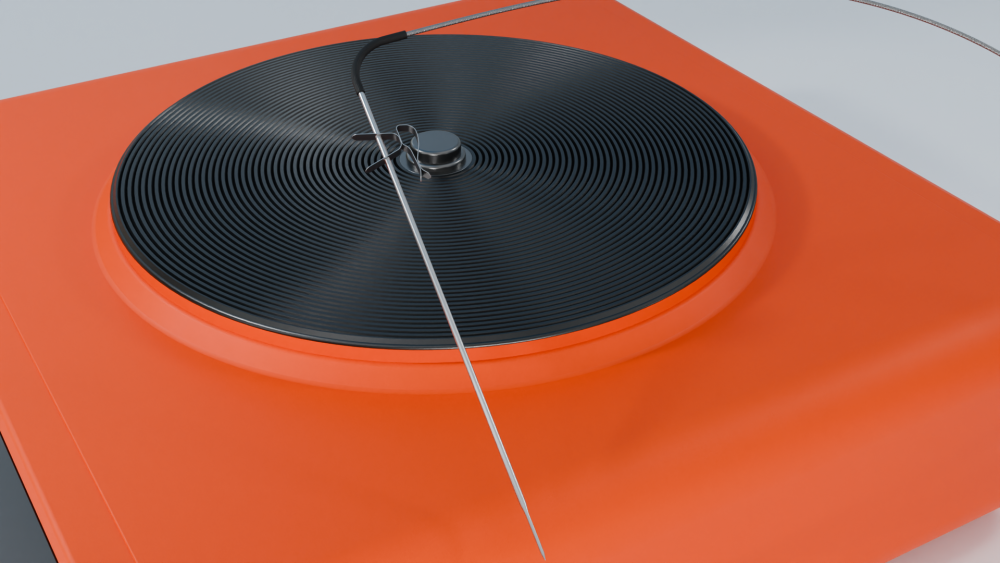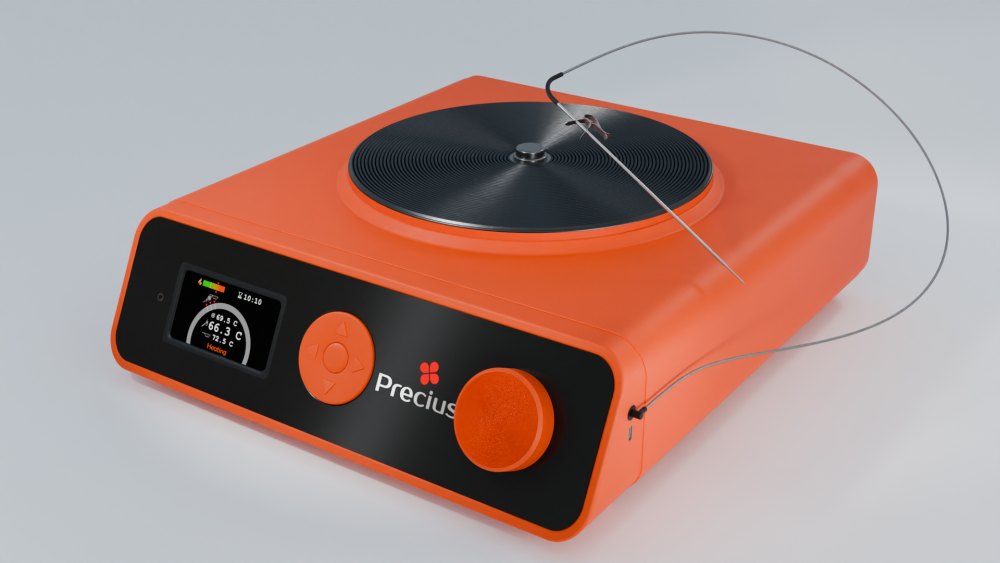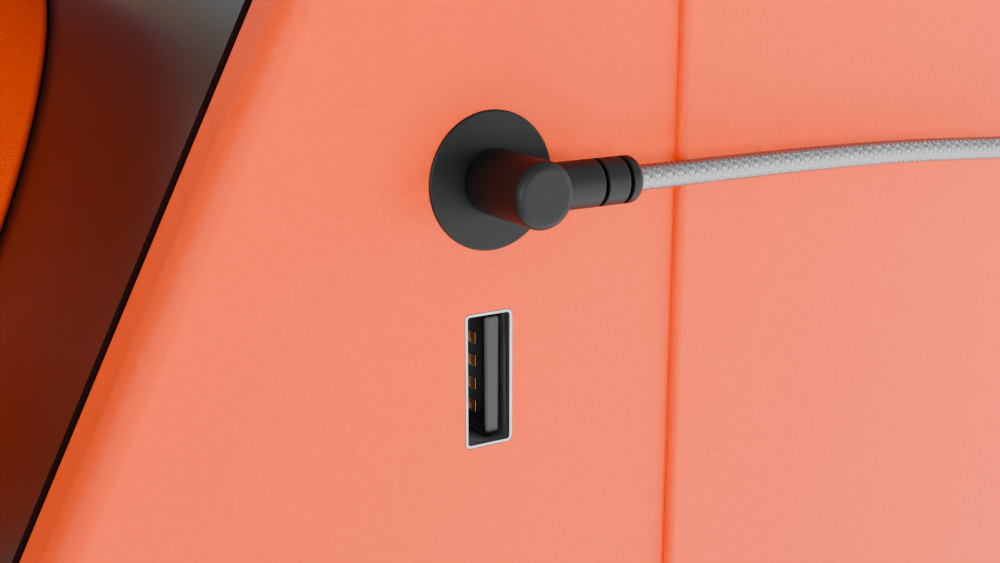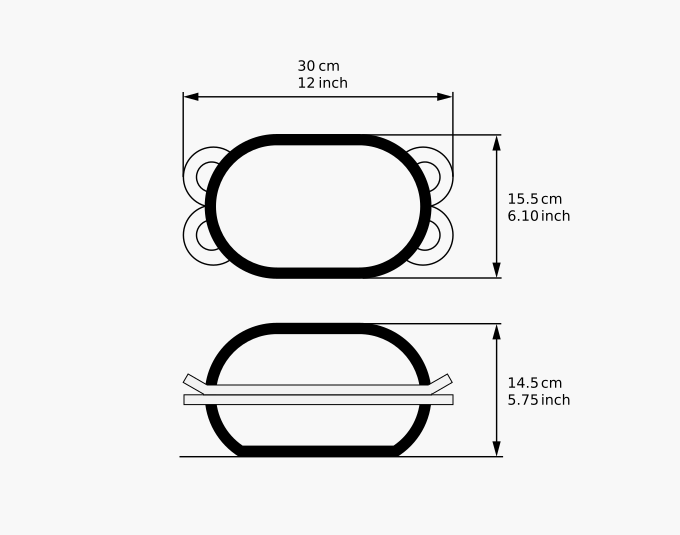-
Posts
38 -
Joined
-
Last visited
Content Type
Profiles
Forums
Store
Help Articles
Everything posted by trfl
-
I remember you too! You quote is permanently enshrined on the Kickstarter, thank you once again! Also, thanks for all the positive words about our next project. I think it is worthwhile for me to clarify here that this product is not an Induction based one. It is based on resistive heating (similar to old electric stoves, but a lot more responsive). This was one of the hardest decisions (so far!) for us to take on this product. Induction has its advantages. It is responsive, it is efficient, the cooktop remains cool and easier to clean. But, our decision to go with non-induction based technology was because: Induction is notorious for being not-uniform in heating. The best multi-layer pans still have a 10-50 F variation [Source. In this case, using a Control Freak, arguably a high performance induction cooktop in every aspect]. Something like cast iron can have 80 F non-uniformity. In our view, for a precision cooker, all the accuracy of 1 F is kind of pointless if the uniformity is 10 to 50 times worse. The figurative lipstick on the pig. So we took an approach more favoring the uniformity. Induction restricts your pan choices. While for most purposes this is not a big issues, we think for precision cooking the compatibility with better spreading materials like copper of aluminum pans is of added value. Apart from material, induction also does not work for very small pans because the detectors do not detect it. Induction is noisy. The coils through which the induction currents run, need to be actively cooled. This often mandates a fan of reasonable size. Not much of an issue during regular cooking, but if you want to use your precision cooking for a 72 hour fermentation cycle or for a fondue on the dining table, this gets very annoying. Induction makes the electronic design a lot more complex. The power electronics get more complex which increases the cost of the whole thing. We do not think it would be feasible to do justice at this price point for an electronic design that would be sufficiently robust, reliable and durable. Paragon, Hestan Cue, Tasty one top, Oliso are all the products that tried to make precision cooking induction around this price point but failed to sustain it commercially. Of course, I do not know the reason, but I can hypothesize that the market size is too low to give economies of scale for such devices at this price point. The available ones with similar function like Contro Freak, Ztove or Impulse cooktop all retail for 1500-6000 $. We believe that staying away from Induction will give this product its best chance of materializing and staying commercially sustainably. Oh, there is one more non-technical reason we are not doing Induction. The patent landscape here is really a landmine and as a tiny two-person company, we do not want to rub the big guys wrong way. We are probably a rounding error for a large company, but we will never know. In the future, may be as you say, we will just create a simple induction cooktop with mechanical controls because how much we hate touch controls.
-
Thanks for taking the time. I am happy that color is the biggest detractor and surely something we can easily change. About the size of the heater, a larger heater as you would say require 'zones' to make it fit all sizes of pans. This is of course possible, but would add to the complexity and hence cost. Also, a larger one will have a much lower power density because of the large area with limited (1500 W) power. I think we will most likely stick with the 8 inch size for the first version and there is always room for the improvement in the future versions.
-
Thanks for the kind words. In a way, we make products mainly for ourselves (for using at home). That is how we made LoafNest (eG-friendly Amazon.com link)and we think that is why it got the acceptance it did. After all, if we do not want to use a certain product, why would someone do and pay money for the privilege? It is a lot easier to sell buzzwords, bells and whistles and most large companies do that. We are tiny (literally a wife-husband couple running the whole show). We have no external shareholders, ambition to make millions or even a specific quarterly result. So we are trying to fill that niche gap for a functional product that is not overly marketed or locked in for commercial interests. We can only hope this is also recognized by the market and that this product will be a modest sustainable success.
-
Our device will have 1500 W power, mainly restricted by the wall outlet in US. May be we will make a 2000W EU/UK version if there is demand. So in that sense, we make this more suitable for cooking. The precision would be around 0.5 C / 1 F which is sufficient for most cooking uses. So in that sense our device is more directed towards cooking whereas the one you have more towards lab use. We are thinking of a few stirring mechanisms, but most likely it would be something like 'Stirmate (eG-friendly Amazon.com link)' (may be we will collaborate with them if they are open to it). We have a 9V power outlet which should be able to plug in a stirrer, or a sous-vide water circulator or a fan or something else. P.S. Signup on the mailing list if this is interesting for you. We would most likely end up crowd funding it and you may be interested.
-
Yes, we are really trying to price this aggressively because we do want to make precision cooking accessible to more people. We do not have investors or shareholders to make happy, we would be happy just not lose (much) money! Color is easy to change. May be we will make multiple versions if there is sufficient interest. For now we chose the symbolic color for the Netherlands (where we are based). We also though since it is a different kind of appliance, it should look a bit different too. Yes, the device will have WiFi in case we want to add some fancy features in the future (e.g. rice ready when you get back home). But for all basic interactive cooking, you would be able to use the just the buttons and knobs. Magnetic stirrer would not be feasible, but we plan to include an automatically stirring spatula. We are working on some ideas and will share when they are mature enough. Thank you for your encouragement. May be we will make a stainless steel version just for people like you who prefer that.
-
About 7 years ago, we posted here about LoafNest (eG-friendly Amazon.com link). The encouragement, suggestions and discussions were received here were surely a large factor in its modest success. As a tiny two-person company, we feel grateful to have gotten that support. Now we are back with our next idea and we hope you would find it interesting too. We are building an open source precision cooker. You can maintain very precise temperatures using the direct pan temperature sensor, or the probe sensor (for liquids, sauces) or both in combination. See this link if you are technically inclined. Or this consumer friendly page for more details. We are proud about these aspects: Affordable: Estimated retail price below $150 with a target of $100. About 10-15 times cheaper than similar products in market. We aim to make precision cooking affordable to everyone. Open source : which means no lock-ins or dead devices. If you bought it, it is yours for ever. See the Github page. Real controls : Real buttons and knobs for all basic functions. No touchscreen or need to use apps for basic function (Who thought touchscreens were a good idea with greasy/wet hands in the kitchen?) Unrestricted : no paid apps, subscriptions or other restrictions. If you are a programmer, you can modify the program using the opensource code. Extendable, repairable: option to extend with stirring, circulating attachments or a cabinet for use as a bread proofer, fermentor or dehydrator [these attachments are in our roadmap]. We would really love to hear what you think about this. Any criticism, comment, suggestion or support will be highly appreciated. After all, as an open source product, we are all building it together.
-
Sorry, no offence was mean to clay bakers! If you are happy with it, nobody should be able to tell you otherwise. For us, what we care is that more people eat healthier and tastier bread at home whether they use LoafNest or not. More people baking at home is a win for everyone. "Industrial area" that would be an adjective that describes most of the Eindhoven thanks to the legacy of being birthplace of Philips. The city is kind of proud of it and many modern buildings are also in the similar architecture. Surely it is not everybody's cup of tea. The food scene here is alright for a city of its size although more or less stagnant. We do have a few 1, 2 Michelin stars in the city and within cycling distance [yes, Netherlands 😀].
-
@blue_dolphin Thank you for taking time to share your experience with LoafNest. We are happy to learn that it worked for you 'as advertized!'. Indeed you can try recipes with more gluten development. If you prefer to do a second raise, it may be worthwhile to get a oblong benneton of around 25cm x 15 cm (10 inch x 6 inch) inner dimension. That would work very well with LoafNest. The price is indeed higher than Kickstarter now thanks to LoafNest being a real product now and to other costs of sales. As a very small company (essentially one-person), we are also yet to achieve economies of scale. But, we are getting there slowly, thanks to word of mouth from supporters like yourself. But if anyone is reading this, just PM us and let us see if we can give you a discount or give insider info about upcoming promotions. 😉 @AlaMoi Indeed, as mentioned by @Duvel, @JoNorvelleWalker clay has overall lower heat capacity. This is mainly due to high density of cast iron compared to clay (which incidentally also makes cast iron heavier for same size). The other disadvantage with clay is that it is a worse conductor than cast iron. So, cast iron is also faster to release stored heat into the dough because it can transport heat (relatievly) faster within itself. So, all things being equal, we expect cast iron would give better result than clay baker. LoafNest's other advantages are the non-stick liner with makes it extremely easy to handle the dough/loaf and allows for a no-shaping method.
-
Spelt is a great grain to work with but it is surely not gluten free. Oftentimes it is used by people who are allergic to wheat proteins (but not allergic/intolerant to gluten). May be hence the wrong association of spelt with gluten free baking. As others mentioned in this thread, it has a nice rich flavor which is a good reason to use it even if you are not allergic to wheat. In general for bread, you can use any whole wheat recipe and replace whole wheat flour 1:1 with spelt flour. We make a nice no-knead, no-shape spelt loaf with LoafNest once in a while. You can see and example on the recipe book (page 24) with 80% hydration.
-
Thank you blue_dolphin, you settled the debate It was a pleasure to see LoafNest in a kitchen half way across the world! We are happy! Hope you had a chance to use LoafNest in another oven where it could fit.
-
LoafNest is only ~6 inch tall so I presume it would fit in the CSO. But it may be a good idea to check with a tape measure the size inside your oven after assembling the lowest rack. Another option is just to use a cast iron casserole (dutch oven) that you know fits in your oven and see if you can make loaves based on LoafNest recipe book. We call it LoafNest recipe book but it is not compulsory to own LoafNest to own the free eBook. LoafNest only makes it easier and better. If you try it without LoafNest, it may be a good idea to scale down hydration of recipes by 10-20% because without LoafNest the loafs may struggle to keep their shape in a large round casserole.
-
As some on this forum know, we are trying to push boundaries of what is possible with bread making, or how easy it is, or both! A part of this journey for us was breads with (relatively) high percent of vegetable content. As usual, all were no-knead, no-shape method based. We were able to use upto 75 bakers' percent vegetable in some recipes (e.g. Cucumber). Great additional flavors, easy way to include more vegetables in the diet and to top it all, really exotic natural colors! We also found that the texture of the crumb was much softer without any compromise on the crunchiness of the crust. Here are some pictures for you! No-knead bread with red Pimento peppers (~35 baker's percent) With fresh green peas (~35%) Fresh tomatoes (60%) With cucumber (78%) Overall, the recipe outline remains the same as the cucumber bread recipe (found here or in the LoafNest recipe book). Just blend the vegetables fine and mix it into the dough. Compensate for the amount of water added by the vegetable. Also, if the vegetable has higher sugar content, it may need a lower raising time. Thats it! Hope you will love experiementing with your own!,
-

Making a good loaf of bread with Indian Atta flour... finally!
trfl replied to a topic in Pastry & Baking
Thanks for the tip chromedome! Yes, Atta is Durum wheat. Indeed, we tried with semolina for somewhat better results compared to atta. But Semolina is not whole grain, but made only from Endosperm. So, you miss a lot of flavor. Also, since the semolina grains are much coarser, the texture is different too. -

Making a good loaf of bread with Indian Atta flour... finally!
trfl replied to a topic in Pastry & Baking
If you would like to try Atta flour, your best bet would be a nearby (or online) south Asian shop (e.g Indian) It is not very expensive because it is a staple in these cuisines. Ensure that you do buy authentic Atta because at some places normal wheat flour is marketed as Atta flour. We can recommend some main brands like Annapoorna, Aashirwad, Pilsbury or Shaktibhog. Do share your results here when you get a chance! -
EliseD, you have a fair point about LoafNest being quite expensive. LoafNest is quite a high quality product and we being small, we are yet to achieve economies of scale. That is why we decided to keep the focus on our main markets from Kickstarter campaign: US and EU. That way it is reasonably priced in those markets and includes all duties and shipping. And the whole import duties thing does not help anyone either. It is a bit cheaper on our own webshop (https://shop.trfl.nl/usa) but at this moment we do not have a shipping solution that includes Canadian duties and GST. We are working on it though. Will drop a line here via PM when we have something reasonable for our Canadian bakers.
-
This is an interesting story about how it took us about 10 years to make a particular kind of bread. Hopefully, it will resonate with others who have a similar quest here. This story about the Indian Atta bread and its notoriety for breadmaking. For those of us here who are familiar with Indian cooking, you would recognize this as the floor used for Indian flatbreads like Roti. For this reason Atta Flour is the mainstream flour in south Asia. Over the last 10 years, we had been making several attempts (mostly failed ones) to make good bread from Atta. The appeal is very obvious to those who have used atta flour. It is whole wheat flour so, has all the fiber, nutrient and mineral content of whole wheat but unlike western whole wheat bread flour, the milling is very fine. This gives a flour that has the texture of a white flour but all the benefits of a whole wheat without the slightly gritty texture. Moreover, due to the climate, cultivars and geography, the atta flour also has a unique nutty flavor to it. All good, except it is was impossible to make good bread with it. We tried pretty much every rule in the book. Kneading, no-kneading, different starters, different raise conditions, different baking conditions, hand made, bread machine made….. But, no luck. A simple google search will show you similar attempts by other people which more likely than not lead to a dense, gummy loaf. It is for that reason that most of the bread sold in India is made not with Atta but with Maida (a flour that only uses the starchy kernel instead of whole grain) which is equivalent of white flour. After several years of trying, we almost gave up on Atta flour. In parallel we had been working on a product called LoafNest to make bread making convenient [Not posting link here because the intention is to keep commercial interest a bit away and focus on breadmaking]. Some of the members of this forum may remember the thread from earlier in the year. So, during our development of LoafNest, Atta flour came up again but we were really not optimistic about trying it. But we went ahead anyway and results probably speak for themselves. It really worked like a charm and surprised even us, the very creators of the product. The loaf was airy with unique flavor of Atta. Well cooked crumb without any gummy feeling. And a whole wheat loaf without the gritty texture. And of course, no-kneading, shaping or cleanup So, what did we learn about Atta bread making is below: Atta is milled in a different process compared to the western wheat flour. The process is high speed so it gives a finer texture. But the process also damages/opens up starch granules. This results in a higher moisture absorption by starch With this information, here are our hypotheses about why making bread with Atta is hard and why it works with LoafNest. With higher hydration, the flour has less strength and more fluidity so it can not hold its shape well after the raise Weakened starch structure also adds to reduction of structural strength So normally atta flour results in dense loaf due to collapse and gummy crumb due to high hydration With LoafNest the long no-knead fermentation somehow increases gluten strength (compared to a knead-version) With LoafNest since there is no shaping step, the gas formed remains in place and available for expansion later during baking The high contact area with casserole somehow improves heat transfer so that the loaf can baker faster than it can collapse For those who are interested, here is the recipe we were able to use. Note that Atta is really absorptive and we use 100% hydration compared to 80% hydration in a normal recipe for LoafNest. What are your thoughts on these? Do you have a better hypothesis why it works well?
-
Hello fellow bakers, Just wanted to thank everyone on this forum for the wonderful feedback on LoafNest earlier in the year. We also have a really good news to share. LoafNest was relaunched on Kickstarter yesterday and we were funded in 3 hours! Thanks for many folks who came originally from this forum to make it happen. See the new campaign at https://www.kickstarter.com/projects/trfl/loafnest?ref=ewu6er -trfl
-
Hi all, Thanks for the amazing support. The LoafNest campaign is going on with a steady momentum. I thought I would share the first LoafNest product review from a food-scientist/blogger/baker. The review answers a lot of questions raised earlier on eGullet and other fora. There is also a comparison side-by-side of a LoafNest and Cast-iron+baking paper method from the same recipe. You can see it here https://foodcrumbles.com/testing-loafnest-smart-way-bake-beautiful-bread/ Hope you find it informative and possibly convincing to back the project (or spread the word) if you already have not. -trfl
-
Good to learn our observations were consistent with yours and that of ModBread. If I may go a bit technical in my thinking here: To bake a good bread, you need certain amount energy supplied to it with a certain rate (power). With a cold pan, I can imagine the bread has to spend more time in the pan to get the same amount of energy [the oven is heating both the heavy pan and the bread]. This means a lower power. So anything time-dependent will suffer. I can imagine oven spring relates is time dependent since you need to gellify the outer layer a bit while the inner gases are still expanding and the dough is not fully hardened. One can probably improve the time factor by using a very light pan so it is not absorbing the energy. But that would still be inferior since with pre-heated pan you get much more power in the initial minutes on the loaf than your oven alone can provide.
-
We tried this but only once since it was a disaster Our hypothesis is that our failure is due to skipping the second raise. So there are no large gas bubbles that can expand further. But may after our Kickstarter campaign we spend some more time with this. It would be great if we can skip the pre-heating step but still get a reliable result. Even more convenient!
-
Nice thought. In fact this was one of the first things we tried. It works reasonably well but not as perfectly as we would like to see in a good product. The liners themselves are not new. You can buy them here. It is the same company that makes Silpat mats. We worked with them to make a custom liner for us. But we had three problems that necessitated a custom cast iron pan. 1. The liners are very flexible and just about support their own weight. So they are unable to retain the shape when heavy dough is within them. This is normally not a huge problem for lower hydration dough since the dough can support itself to retain its shape. The use of this liners is in professional bakeries that use ~70% hydration at most. We use 80-90% hydration that makes the dough basically a slurry. Also, we skip the second raise step completely so the dough have even less strength when it goes into the liner. So we needed to support it with a liner with a custom shape until the bread became solid enough. 2. The whole idea of using cast iron is to maximize the conductive heat transfer. For a round loaf the bottom area is large enough. But since we wanted to keep a more practical oblong loaf shape, we would use a much smaller contact area at the bottom of the loaf if we did not use a fitted cast iron around it. Now we use the sides as well as bottom for direct heat transfer. 3. Cast iron casseroles come in various sizes, shapes and forms. It was impossible to make one liner that will work even with a majority of them. Finally, the liners themselves are quite expensive (as you can see from the Demarle page I linked above). So beautiful cast iron at slightly higher point is quite a value for money. Hope you will like to support our campaign by backing or sharing with your contacts.




